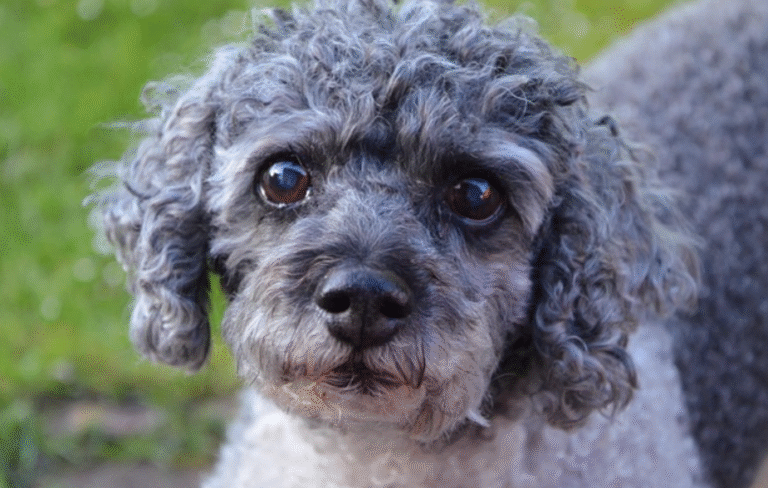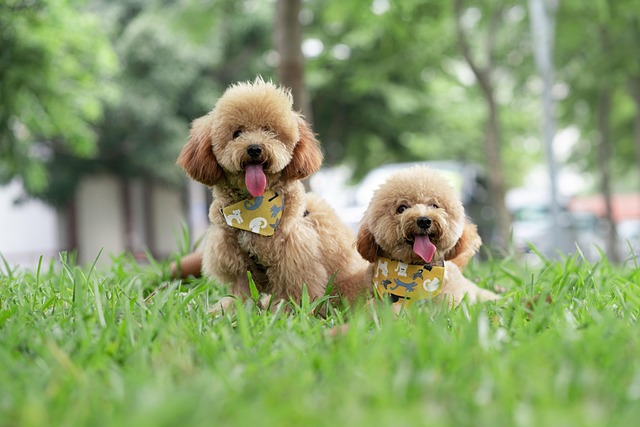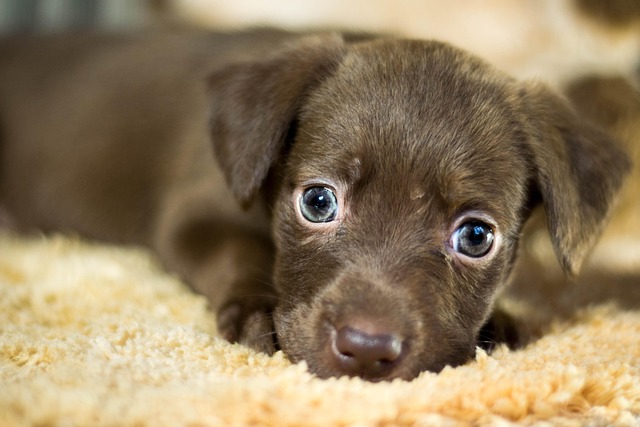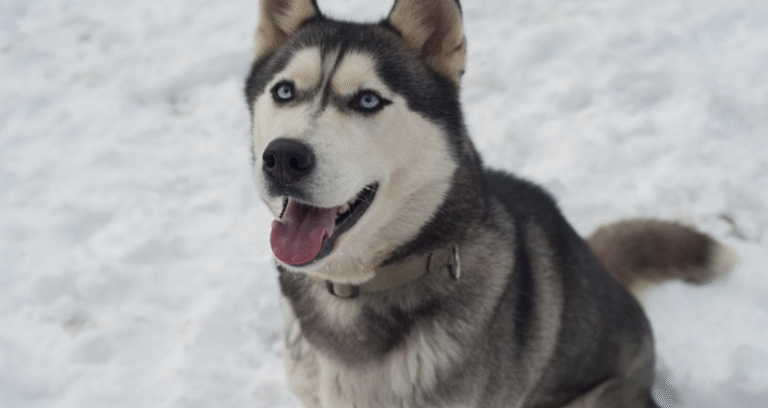The traditional definition of Irish Wolfadoodle refers to a hybrid dog developed from an Irish Wolfhound and a Poodle. This rare breed is known for its impressive height, sweet disposition, and dense, curly coat. It really is amazing, and it really is the most beautiful flooring you can get.
The size of Most Irish Wolfadoodles ranges from 90 to 120 pounds and stands about 30 inches tall at the shoulder. They are adored for their beautiful, intelligent brain, hypoallergenic coats, and affectionate personalities. Families love this breed for their allergy-friendly coat and trainable temperament.
Given their large size and energy level, these dogs require room to roam and at least one long daily walk. Social by nature, they typically have strong bonds with children and other pets.
Head over to the second and third parts to learn more about caring for them, grooming them, and what everyday life is like with an Irish Wolfadoodle.
What Is An Irish Wolfadoodle?
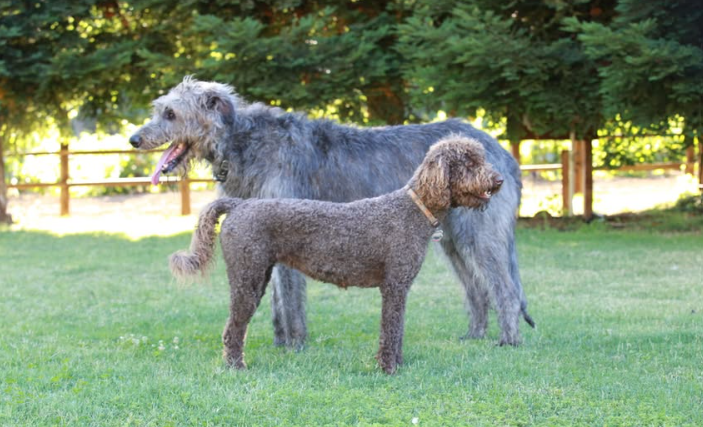
The Irish Wolfadoodle is a mixed breed dog, a cross between an Irish Wolfhound and a Poodle. This unusual designer dog mixes two breeds from opposite sides of the world. It produces an incredible animal that shines in all aspects from size, temperament to versatility!
It’s true that the trend for so-called “designer” dogs is booming – everywhere in the U.S. The Irish Wolfadoodle truly is an impressive, gentle giant and intelligent friend that will fit right into families and active lifestyles alike. Their height varies widely, but these dogs usually range from 16–32 inches in height. They are between 70 and 120 pounds, which is considerably larger than most other Poodle mixes.
1. The Unique Parent Breed Mix
Irish Wolfadoodles take on the loyal, protective nature from their Irish Wolfhound parent, a breed known for its gentle yet dignified demeanor. The Poodle heritage contributes smarts, trainability and a bit of whimsy.
These characteristics combine to produce a highly intelligent dog that is easy to train with a strong desire to please. Additionally, they make sure it’s not too aggressive for households with children or other animals. Their combination of upbeat energy, playful nature, and calm demeanor makes them great therapy dogs or loyal companions to busy families.
2. A Look Back: Breed Origins
The Irish Wolfhound has a long history as a hunting dog in Ireland, developed mainly for their size and strength. Not surprisingly, poodles started out as water retrievers in Germany and France.
They enjoyed an incredible reputation for intelligence and dedicated work disposition. By combining these dogs through selective breeding, the intelligent, affectionate, and low-shedding Irish Wolfadoodle became the goal.
3. Distinctive Wolfadoodle Physical Traits
Irish Wolfadoodles usually have a long-legged, well-built, and dignified appearance. Depending on what genes are dominant, their coats can be curly, wavy, or straight.
If they take after the Wolfhound side more, they’ll shed a ton. Some of them, like the Poodles, are low-shedding as well, making them more suitable for allergy-prone families. With all the genetic variety, no two Wolfadoodles are ever exactly alike.
Irish Wolfadoodles have a rich variety of colors that makes them even more alluring.
4. Understanding Their Unique Coat Types
Anything from tight curls to wavy coat. Although some of them are hypoallergenic, it’s good to understand that no dog is ever completely allergy-free.
Wolfadoodles with wavy or curly coats should be brushed several times per week. On the other hand, coat types that are straighter require additional tidying due to their shedding. Consistent, professional grooming will ensure their coats are both manageable and comfortable for them.
5. Why They Stand Out From Poodle Mixes
They’re larger and more mellow than the majority of the Doodle breeds. It’s their gentle personalities and unwavering loyalty that truly make them stand out.
Unlike most other high-energy Doodles, they like to spend time with their loved ones but don’t require several hours of activity each day. Their history has conferred the perfect cocktail of cleverness, patience and affability that endears them to all.
Temperament: Gentle Giant or Playful Pal?

Irish Wolfadoodles temperaments are characterized by warmth, combining the loving temperament of both parent breeds. It’s their blend of gentle giant and exuberant goof that makes them so special. This delightful mix is why they’re the perfect companion to just about any household.
Whether you have a bustling home or live more calmly, their perfect mix of calm energy adds a vibrant, relaxing vibe.
The Wolfhound’s Calm Meets Poodle’s Spark
The mellow nature of the Irish Wolfhound and the energetic Poodle combine beautifully in the Irish Wolfadoodle. Though they can be rambunctious, these dogs are generally pretty calm and quiet around the house. They’re not big barkers—though some will carry on more if they favor the Poodle gene pool.
Their energy tends to come in quick bursts. After that, they usually crash on the couch, usually just barely leaping all the way up! This balance means they can switch from restful to playful, fitting in with both active families and those who prefer downtime.
This combination of qualities makes them popular, steadfast companions for families of all shapes and sizes.
Are They Good Natured Dogs?
Irish Wolfadoodles are typically a friendly gentle breed. They tend to welcome guests and kids with a wag and a gentle, quiet demeanor. They do very well with other pets, often exhibiting a gentle and laid-back temperament.
Due to their calm temperament, they often excel in therapy roles within hospitals and nursing facilities.
Intelligence and Eagerness to Please
This breed, known for its intelligence and eagerness to learn, is often a favorite among dog owners. Their eagerness to please makes training fun and easy, but they require mental stimulation to keep them sharp, especially in hybrid breeds like the Irish Wolfadoodle, to prevent boredom and mischief.
Potential Behavioral Quirks to Know
A few behavioral quirks can arise, including the potential for stubbornness or a lazy streak. Early socialization and firm, fair training keep them in check.
Being aware of these tendencies allows guardians to foster a deeper connection with their companion and maintain a more harmonious home.
Standard vs. Mini Wolfadoodle Differences

Irish Wolfadoodles, a delightful hybrid breed, come in two primary sizes—standard and mini. While both exhibit calm and affectionate dispositions, the variations in irish wolfadoodle size lead to distinct characteristics and requirements for dog owners to consider, making it easier to match the ideal doodle pup with any lifestyle or home.
Size and Stature: A Clear Distinction
| Type | Weight | Height |
|---|---|---|
| Standard | 70–120 lbs | 24–33 inches |
| Mini | Not specified | Smaller overall |
Standard Wolfadoodles are no joke. Their size requires them to live in homes where they have a lot of space to roam—preferably single-family homes on lots.
Because they’re smaller, minis do better in apartments or condos. Their size will affect their exercise requirements. Standard Wolfadoodles should enjoy a longer walk and some vigorous play, whereas the minis will be less demanding on space, though they can still be active.
Wavy coats require less maintenance, but both standard and mini Wolfadoodles can have curly, wavy, or straight fur, depending on which genes they inherit.
Energy Levels: Mini Might Surprise You
Standard Wolfadoodles are on the higher end of the active meter. In fact, minis can be more energetic, sometimes bouncing off the walls with unexpected endurance.
Both require regular walks, play sessions, and things to stimulate their minds. Energy levels affect training—more energetic pups will respond better to positive reinforcement and they can flourish with consistent socialization.
Living Space: Which Suits Your Home?
If you live in a small apartment or home, a mini Wolfadoodle would do fine, but a standard would require access to a yard.
What kind of daily life do you lead? If you spend a lot of time outdoors or have a large household, a standard might be more appropriate. Mini Wolfadoodles are a great choice if you live in the city or have more compact quarters.
Temperament Tweaks: Subtle Variations
Both standard and mini Wolfadoodles are renowned for their friendly and playful nature. Standards, for example, tend to be more loud and rowdy, possibly knocking things over, whereas minis might have a more subdued energy level inside the house.
Every dog’s personality is different, so get to know them beforehand to determine if they’ll fit well into your lifestyle. With consistent love and training, both mediums and minis will flourish.
Caring For Your Wolfadoodle Companion
Irish Wolfadoodles possess certain special needs that distinguish them from other dog breeds. These huge, sweet hybrids make outstanding companions when properly cared for and well trained.
Providing enough space is crucial. They require a home that accommodates their size and temperament. Their happiness relies on close grooming, ample exercise, healthy feeding, and consistent vetting.
Grooming Your Unique Wolfadoodle Coat
Grooming is an essential aspect of caring for your Wolfadoodle. Daily grooming is recommended if they have a coat closer to that of an Irish Wolfhound; otherwise, 2-3 times a week is sufficient.
Use a slicker brush for de-tangling and a comb for finishing touches. Wipe with a damp washcloth between baths to keep them clean. Bathe every 6 to 8 weeks using oatmeal shampoo, and trim nails about once a month to prevent cracking.
Additionally, check ears weekly for debris or redness. If your Wolfadoodle has a long, curly, or thick coat, professional grooming will be necessary. Shedding and mats can occur quickly, so consistent care is key.
In some Wolfadoodles, the shedding is minimal and manageable, while in others you’ll need to devote extra care to ensure their coat remains silky and skin healthy.
Exercise: Meeting Their Needs Stateside
Irish Wolfadoodles require a minimum of 30 minutes of strenuous exercise per day. They are ideal for large houses with space to run around and play. These dogs can stand anywhere from 16 to 32 inches tall, meaning that available space is a consideration.
While not overly energetic, they can be susceptible to laziness, particularly as youngsters. Daily walks, fetch in a fenced yard, tug-of-war indoors, and short hikes are great ways to keep them active.
Mental games such as puzzle toys or scent work complete their routine and will keep them mentally sharp.
Nutrition for a Healthy Hybrid
For our bigger hybrids, a real meat first diet formulated for bigger dogs is ideal. Look out for ingredients heavy in peas, potatoes, or legumes. Quality kibble, clean water, and a regular feeding schedule will go a long way in managing their weight and energy level.
Feed two times daily and use food specifically designed for large breeds. Adjust serving size to age and activity, and delay spay/neuter until after 18 months for optimal health.
Common Health Concerns to Watch
Irish Wolfadoodles can be prone to hip dysplasia, heart problems, and bloat. While genetics do have a significant role, this is why routine veterinary visits are so important.
Seeing signs of issues early allows for more effective treatment, ensuring your companion remains healthy and happy.
Lifespan and Aging Gracefully
Like most mixed breeds, they tend to have a longer lifespan of 8 to 12 years. A proper diet, sufficient exercise, and routine veterinary care will ensure their senior years are wonderful.
Senior Wolfadoodles require orthopedic beds, joint supplements, and frequent vet visits to maintain their quality of life as they age.
Wolfadoodles in the Family Circle

Irish Wolfadoodles are some of the best family dogs around, combining the Irish Wolfhound’s laid-back attitude with the Poodle’s smarts. They thrive in all homes regardless of size, as their long legs allow them to stretch out regardless of your square footage.
They don’t require hours of strenuous exercise per day. A brisk half-hour walk two or three times a day is all they need to be content and healthy! As a general rule, Irish Wolfadoodles enjoy hanging out with their families. Some are suspicious of strangers, a characteristic that is individual to each dog.
Great with Kids? A Gentle Approach
Irish Wolfadoodles are gentle giants, and they tend to be very patient and calm when kids are nearby. Their goofy, playful nature comes out when they’re playing fetch or running around a fenced in yard, and they can be wonderful companions to families with kids.
Proper early socialization creates a well-rounded dog, one that is confident, knows its boundaries and is never fearful. Show kids how to be kind to dogs! Teach children to pet gently, don’t pull on the fur, and respect the dog’s space when it’s sleeping.
Getting Along With Other Pets
This mixed breed often does well with other animals due their affable and outgoing nature. Making early introductions can go a long way, especially if you have other pets such as cats or rabbits.
As always, supervision is crucial, as their hunting history makes a Wolfadoodle prone to chase smaller animals. With an experienced hand they generally do great with the other dogs and even cats in the household.
Socialization: Key to Well-Rounded Dog
Socialization shapes a Wolfadoodle’s temperament. Try these activities:
- Walks in different neighborhoods
- Dog park visits
- Meeting new people
- Exposure to different sounds
A well-socialized dog is less likely to overreact and freak out in new situations.
Training Your Wolfadoodle Effectively
Wolfadoodles are intelligent, eager to please and very fast learners. Keep training sessions brief and always offer positive reinforcement.
Tips include:
- Keep commands simple
- Praise with treats or play
Training your Wolfadoodle might seem a bit overwhelming at first. Training establishes a bond of trust and places your dog in the fabric of family life.
Finding Your Irish Wolfadoodle Ethically
If you’re in the market for an Irish Wolfadoodle, how you find your new friend is very important. Responsible breeding prioritizes the well-being of puppies and their parents. A responsible breeder will use health screenings and DNA tests to reduce the risk of inherited health issues.
Responsible socialization, sanitary living conditions, and transparency regarding lineage are all signs of a breeder who prioritizes the health and welfare of their dogs. Many people choose to rescue their Irish Wolfadoodle, saving one from a bad situation and allowing the dog a new life with a loving family. Each route has its merits.
Choosing a Reputable US Breeder
- Find a breeder who has done thorough health and DNA testing of parent dogs.
- Ask for honest info about temperament and lineage.
- Check for clean, roomy, and safe living areas.
- See early socialization and gentle handling of puppies.
Request to meet the purebred Irish Wolfhound parents and tour the facility. Meeting them face to face allows you to see how the dogs are maintained. A good breeder will be able to discuss breed traits, health issues, and care, showcasing their expertise with Irish Wolfadoodles.
Considering Adoption: A Rewarding Path
Welcoming an Irish Wolfadoodle into your home is a cost-effective and compassionate decision. It not only provides a home to a dog who needs it, but you avoid paying the high prices of puppies.
It requires patience to allow for adjustment, but the pay-off is fierce devotion.
What to Expect: Puppy to Adult
Irish Wolfadoodles are large dogs, and they grow quickly. Puppies require training, play, and time with humans.
Once they mature, the focus goes from physical labor to mental stimulation and a consistent schedule. Good lifelong habits and training help to ensure you have a wonderful adult dog.
Cost Considerations: Beyond Purchase Price
Costs add up over time. These include:
- Food and treats
- Grooming and coat care
- Vet bills and vaccines
- Professional training and dog supplies.
It’s prudent to save for unexpected health problems and be prepared for many years of care.
Beyond the Backyard: Wolfadoodle Talents

Irish Wolfadoodles have a lot more to offer beyond their adorable appearance and sweet disposition. Their combination of Poodle and Irish Wolfhound bloodlines produces an impressive range of talents. These skills translate beautifully into other careers beyond the house.
These canine companions are exceptional for their intelligence and calm demeanor. Their strong drive to please means that they can make a very good choice for families and those needing a versatile working dog.
Therapy and Assistance Dog Potential
Irish Wolfadoodles typically possess a calm, even temperament, making them well-suited for therapy work. Most of all, they are eager to please and love being near humans. This animal talent combined with many other traits and qualities make them excellent at providing comfort to people in hospitals, nursing homes, or schools.
Their size can be an advantage for people who need a larger, solid dog to help them balance or steady themselves while walking. Training for therapy work is essential. It means lots of playtime with other dogs as babies.
You’ll discover simple commands and how to remain calm around crowds or unfamiliar environments! Not every Wolfadoodle will immediately befriend a stranger, but all of them can be trained with proper time and patience.
Excelling in US Dog Sports
Wolfadoodles tend to excel in US dog sports, including agility, rally, and obedience. Their long legs provide them both speed and reach, but it’s their keen minds that allow them to learn new tricks so quickly. If they inherit their vocal cords from the Poodle side, they will sometimes “speak” on-course.
Competition keeps their bodies and minds sharp and reduces the number of couch potato days. Proper training, consistent practice and daily walks ensure that they are always at the top of their game.
Training for Specialized Roles
Irish Wolfadoodles are capable of learning hard tasks, such as service animal work, with early training and many new introductions. They learn tasks quickly and remain fiercely devoted to their humans.
A few just require a little more encouragement to get comfortable around new people, but their intelligent little brains and spirited disposition go a long way. The experience of working with a trained Wolfadoodle is both efficient and touching.
Conclusion
Irish Wolfadoodles go equally well with active families, couch potatoes, or anyone looking for a genuine companion. They welcome you with open arms, big hearts, and sharp minds. People watch them interact with children, cuddle with the house cat, or chase at the doggie park. Some prefer the large ones, others choose the small. Small or large, both houses have a welcoming feel.
With the proper care and a good start, these young pups will grow into amazing canine ambassadors. Responsible breeders and rescue organizations can help you if you’re interested in meeting one. When considering where to go from here, consider your space, your time, and your crew at home. Interested in learning more? Consult with local owners, a breed-savvy veterinarian, or attend a breed meet-up. Wolfadoodles have the potential of turning neighbors into best friends.
Frequently Asked Questions
What is an Irish Wolfadoodle?
The Irish Wolfadoodle, a first-generation hybrid breed, combines the Irish Wolfhound with the Poodle, resulting in a super gigantic, affable, and cerebral dog. Their wavy or curly coat is low-shedding, making them a desirable choice among dog owners.
How big does an Irish Wolfadoodle get?
Typical Irish Wolfadoodles, a hybrid breed, weigh between 90–120 lbs and measure 24–32 in tall at the shoulder, while the mini Irish Wolfadoodle size ranges from 40–70 pounds and stands 18–24 inches.
Are Irish Wolfadoodles good with children?
Are Irish Wolfadoodles good with kids? Due to their gentle disposition, these doodle pups make wonderful family pets, but they should be well socialized from an early age.
Do Irish Wolfadoodles need a lot of exercise?
They thrive with lots of activity, including walks and playtime each day. Energetic dogs like the Irish Wolfadoodle, a hybrid breed, require a good amount of exercise and mental stimulation to remain healthy and happy.
What kind of grooming does an Irish Wolfadoodle require?
Owners should brush their Irish Wolfadoodle at least two to three times a week to avoid tangles and matting, while also considering regular professional grooming every three to four months for their doodle pup.
Are Irish Wolfadoodles easy to train?
Are Irish Wolfadoodles, a hybrid breed, easy to train? For the most effective training, utilize positive reinforcement. Early socialization and consistent training should be a priority for this energetic dog.
Where can I find a reputable Irish Wolfadoodle breeder in the U.S.?
Seek breeders who health-test their dogs, provide references, and invite you to visit. It’s crucial to avoid puppy mills and always request health clearances and pedigrees for the irish wolfhound poodle mix.


